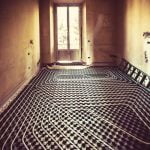When it comes to owning a home, there are a multitude of financial considerations that homeowners must navigate. One important aspect to understand is capital gains and how they can impact your finances. In this article, we will explore what home improvements are deductible from capital gains, providing you with valuable information to help maximize your tax benefits.
First, let’s define capital gains. Capital gains refer to the profits made from the sale of an asset, such as a home or an investment property. When selling a property, homeowners may be subject to capital gains taxes on the profits they have made. However, by strategically deducting certain home improvements from these gains, homeowners can potentially reduce their tax liability.
One of the key benefits of deducting home improvements from capital gains is that it allows homeowners to lower their taxable income. By reinvesting in their properties through upgrades and renovations, homeowners can not only enhance the value of their homes but also potentially lower their tax burden when it comes time to sell.
In the following sections, we will delve deeper into what qualifies as a home improvement for capital gains deduction and outline specific types of improvements that can be deducted. Additionally, we will explore the time frame within which these improvements must be made and any limitations or exclusions that may apply. We will also provide guidance on record-keeping requirements and offer expert advice on maximizing your deductions.
Whether you are looking to sell your principal residence or own rental properties, understanding what home improvements are deductible from capital gains is crucial for optimizing your financial situation. So let’s dive in and discover how you can make the most out of your investments while minimizing your tax obligations through strategic deductions.
What Qualifies as a Home Improvement for Capital Gains Deduction
In order to deduct home improvements from capital gains, it is important to understand what qualifies as a home improvement in the context of these deductions. The term “home improvement” generally refers to any enhancement or alteration made to a property that adds value or prolongs its useful life. It is important to note that routine maintenance and repairs are typically not considered home improvements and therefore cannot be deducted from capital gains.
Examples of Deductible Home Improvements
There are many different types of home improvements that may qualify for a capital gains deduction. Some examples include:
- Adding square footage: Any additions or expansions that increase the living space of a property can typically be considered deductible home improvements. This could include building an addition onto the existing structure, finishing a basement or attic, or constructing a detached garage.
- Upgrading kitchens and bathrooms: Renovating kitchens and bathrooms can often add significant value to a property. Therefore, expenses related to upgrading fixtures, countertops, appliances, cabinets, and plumbing systems may be eligible for deduction.
- Installing energy-efficient upgrades: Making energy-efficient upgrades such as installing solar panels, energy-efficient windows, insulation, or HVAC systems can not only help reduce utility bills but also potentially qualify for tax deductions.
Exploring Special Circumstances
It is important to recognize that there may be special circumstances where certain expenses related to home improvements are eligible for deduction even if they do not fall under the traditional definition of “home improvement.” For example:
- Improvements made for medical purposes: If homeowners make modifications to their property specifically for medical reasons, such as adding wheelchair ramps or modifying bathrooms for accessibility purposes, these expenses may be deductible.
- Capitalized repairs: In some cases, repairs that are classified as “capitalized repairs” rather than routine maintenance might be eligible for deduction. Capitalized repairs occur when the expenditure extends the useful life of the property or increases its value.
Understanding what qualifies as a home improvement for capital gains deductions is crucial for homeowners looking to maximize their tax benefits. By keeping track of eligible expenses and understanding any special circumstances, homeowners can take full advantage of available deductions and potentially reduce their capital gains tax liability.
Understanding the Time Frame for Capital Gains Deduction
When it comes to deducting home improvements from capital gains, it is crucial to understand the specific time frame within which these improvements must be made. The Internal Revenue Service (IRS) has guidelines in place that homeowners must adhere to in order to be eligible for this deduction.
Typically, the time frame for capital gains deduction starts when the home improvement project begins and ends when the property is sold. The IRS considers a home improvement as completed when it is “placed in service,” which means it is ready for use or occupancy. It’s essential to keep detailed records of the start and completion dates of each improvement project, as well as any relevant invoices or receipts.
It’s worth noting that there may be exceptions or special circumstances that allow homeowners to deduct home improvements even if they were made several years before selling the property. For example, if the homeowner lived in the property for at least two out of the last five years before selling, they may still be able to claim deductions for past home improvements.
| Deductible Home Improvements | Start Date | Completion Date |
|---|---|---|
| Remodeling of Kitchen | January 1, 2020 | October 15, 2020 |
| Installation of Energy-Efficient Windows | June 1, 2019 | August 30, 2019 |
| Adding a Bathroom | March 1, 2021 | October 30, 2021 |
By understanding the time frame for capital gains deductions, homeowners can ensure their home improvement projects are properly documented and meet the necessary requirements for eligibility. It is always advisable to consult with a tax professional or financial advisor to fully comprehend the nuances of these deductions and maximize their potential benefits.
Deductible Home Improvements for Principal Residences
When it comes to deducting home improvements from capital gains, homeowners should be aware of the specific types of improvements that are eligible for deduction. The good news is that there are a wide range of home improvements that can be deducted when made to a principal residence.
Energy-Efficient Upgrades
One category of deductible home improvements for principal residences includes energy-efficient upgrades. These can include installing solar panels, upgrading windows and doors for better insulation, replacing old appliances with energy-efficient models, or improving insulation in the walls and attic. These types of improvements not only benefit the environment but also help homeowners save on energy costs in the long run.
Accessibility Modifications
Another category of deductible home improvements for principal residences is accessibility modifications. These modifications aim to make the home more accessible and accommodating for individuals with disabilities or mobility challenges. Examples may include adding ramps or lifts, widening doorways, installing handrails or grab bars, or modifying bathrooms and kitchens to be wheelchair-friendly. It’s important to note that these modifications must significantly improve the accessibility of the home to qualify for deductions.
Home Office Improvements
If you use part of your principal residence as a designated home office space, certain improvements made to that area may also be deductible. This can include costs associated with renovations or upgrades directly related to your home office, such as adding extra electrical outlets, built-in shelving or cabinetry, or improving lighting and ventilation.
However, it’s important to note that only expenses directly related to your home office space can be deducted; any improvements made to other areas of your principal residence would not qualify.
It is crucial for homeowners who wish to claim deductions for these types of improvements on their capital gains taxes to keep detailed records and invoices documenting the costs incurred. Additionally, consulting with a tax professional is advisable to ensure that all deductions are claimed correctly and in compliance with tax regulations. By taking advantage of these deductions for principal residences, homeowners can maximize their capital gains deductions and potentially reduce their tax burden.
Deductible Home Improvements for Rental Properties
Renting out a property can be a lucrative investment, and as a landlord, you may be wondering if you can deduct home improvements for your rental property from capital gains. The good news is that certain home improvements made to rental properties can be eligible for capital gains deductions. However, it’s important to understand the guidelines and requirements surrounding these deductions.
To qualify for capital gains deductions on home improvements for rental properties, the IRS requires that the improvements be considered “ordinary and necessary.” This means that the improvement should relate directly to the rental activity and be common or accepted in the rental property business. Examples of deductible home improvements for rental properties may include:
- Repairs: Any repairs made to maintain or improve the property’s condition are generally deductible. This can include fixing plumbing issues, repairing electrical systems, or patching up holes in walls.
- Upgrades: Upgrades that provide long-term benefits to the property may also be deductible. This can encompass installing new flooring, upgrading appliances, or adding energy-efficient features like solar panels.
- Renovations: If you make significant renovations to improve the overall functionality or aesthetics of the rental property, such as adding an additional bedroom or remodeling a kitchen, these expenses may also qualify for deduction.
It’s important to note that regular maintenance expenses, such as painting or lawn care, are not considered capital improvements and cannot be deducted from capital gains.
When claiming deductions for home improvements on rental properties, it’s crucial to keep detailed records of all expenses incurred. This includes receipts, invoices, contracts with contractors or suppliers, and any other relevant documentation that proves the cost and nature of each improvement made.
Limitations and Exclusions in Capital Gains Deductions for Home Improvements
When it comes to deducting home improvements from capital gains, there are certain limitations and exclusions that homeowners should be aware of. While deducting home improvements can provide tax benefits, it’s important to understand the restrictions and exceptions that apply. Here are some key points to keep in mind:
- Repairs vs. Improvements: It’s crucial to distinguish between repairs and improvements when claiming deductions for capital gains. Generally, repairs are not deductible, while improvements that add value or prolong the life of a property can be deducted. For example, replacing a broken window is considered a repair and cannot be deducted, whereas installing new energy-efficient windows would qualify as an improvement.
- Timing Restrictions: One limitation to consider is the time frame within which home improvements must be made to be eligible for deduction. In general, home improvements must be made within 90 days before or after the sale of the property. This means that if you plan on selling your home, it’s important to complete any eligible home improvement projects within this timeframe in order to claim deductions.
- Exclusions for Personal Use Property: It’s worth noting that deductions for capital gains from home improvements do not apply to personal use property. Personal use property refers to items primarily used by an individual or their family for personal purposes, such as furniture or appliances. Therefore, any improvements made to personal use property cannot be deducted from capital gains.
To ensure a smooth process when claiming capital gains deductions for home improvements, it’s essential to keep accurate records and diligently document all relevant expenses. This includes saving receipts, invoices, contracts, and any other proof of payment related to the home improvement projects.
Additionally, seeking advice from tax professionals or financial experts can help navigate through any complexities or unique situations that may arise when deducting home improvements from capital gains. They can provide further clarification on specific limitations, exclusions, and requirements that apply to your particular circumstances.
By understanding the limitations and exclusions associated with capital gains deductions for home improvements, homeowners can make informed decisions and maximize their tax benefits. It’s important to stay updated on any changes in tax laws or regulations that may affect these deductions, as they can vary over time.
Record-Keeping and Documentation for Capital Gains Deduction
One crucial aspect of claiming capital gains deductions for home improvements is maintaining proper record-keeping and documentation. Without accurate and thorough records, homeowners may struggle to prove their eligibility for deductions and could miss out on potential tax benefits. In this section, we will provide guidance on the essential record-keeping processes and documentation necessary for claiming capital gains deductions for home improvements.
To effectively claim capital gains deductions, homeowners should keep a complete record of all expenses related to their home improvements. This includes receipts, invoices, contracts, and any other relevant documentation that verifies the cost and nature of the improvements made. These records should clearly indicate the date the improvements were made, the specific work or materials involved, and the amount spent.
Additionally, homeowners should keep a detailed account of any professional services utilized during the improvement process. This can include invoices or contracts from contractors, architects, designers, or any other professional hired to assist with the project. By maintaining thorough records of these expenses and services rendered, homeowners can strengthen their case for capital gains deductions.
In order to ensure accuracy and prevent any potential disputes with tax authorities regarding home improvement deductions, it is recommended that homeowners also keep before-and-after photographs or videos of the property. These visual records can help demonstrate the extent of the improvements made and provide supporting evidence to back up their claims.
| Documentation | Purpose |
|---|---|
| Receipts | Verify expenses and amounts spent on home improvements |
| Invoices/Contracts | Document professional services utilized during improvement process |
| Before-and-after photographs/videos | Showcase extent of improvements made to property |
Accurate record-keeping and documentation are crucial as they provide evidence that the improvements were made and allow homeowners to demonstrate the value added to their property. By keeping these records organized and readily accessible, homeowners can confidently claim deductions for capital gains when they file their taxes.
It is important to note that record-keeping requirements may vary depending on local tax laws and regulations. Homeowners should consult with tax professionals or financial advisors to ensure compliance with specific documentation requirements in their jurisdiction. By following these guidelines, homeowners can maximize their capital gains deductions for home improvements and potentially reduce their overall tax liabilities.
Additional Considerations and Expert Advice on Capital Gains Deductible Home Improvements
In addition to understanding the basics of capital gains and qualifying home improvements, there are several additional considerations and expert advice that homeowners should be aware of when it comes to deducting home improvements from capital gains.
One important consideration is to consult with a tax professional or financial expert who can provide personalized advice based on individual circumstances. These experts have a deep understanding of tax laws and regulations, and can help homeowners navigate the complexities of capital gains deductions for home improvements. They can ensure that homeowners are taking full advantage of all eligible deductions and avoiding any costly mistakes.
Another consideration is to keep detailed records and documentation of all home improvements made. This includes invoices, receipts, contracts, and any other relevant paperwork. Thorough record-keeping is essential for substantiating the costs of the improvements and supporting any claims for deductions in case of an audit. Homeowners should also maintain a separate file specifically dedicated to documenting all aspects of their eligible home improvements.
It is also advisable to stay informed about any updates or changes in tax laws related to capital gains deductions for home improvements. Tax laws can change over time, so it’s important for homeowners to stay up-to-date with any new regulations that may affect their ability to claim deductions. This can be done through researching reputable sources, attending seminars or webinars on tax planning, or seeking guidance from professionals who specialize in tax law.
By considering these additional factors and seeking expert advice, homeowners can maximize their capital gains deductions for home improvements. The expertise provided by professionals, coupled with diligent record-keeping practices, will help ensure that homeowners take full advantage of the tax benefits available to them while staying compliant with current regulations.
Conclusion
In conclusion, understanding and maximizing capital gains deductions for home improvements can provide significant benefits for homeowners. By deducting eligible improvements from capital gains, homeowners can reduce their taxable income and potentially save money on their taxes. It is important to carefully review the guidelines and requirements for these deductions to ensure eligibility.
Throughout this article, we have discussed the basics of capital gains and how they are relevant to homeowners. We also explored what qualifies as a home improvement for capital gains deduction, including various examples of deductible improvements. Additionally, we delved into the time frame for making home improvements and discussed any exceptions or special circumstances that may apply.
We learned that different rules apply to principal residences compared to rental properties when it comes to deductible home improvements. Homeowners should carefully assess the types of improvements that qualify for deduction based on their specific property type.
Furthermore, we explored any limitations or exclusions in capital gains deductions for home improvements and provided guidance on record-keeping and documentation processes. It is crucial for homeowners to keep thorough records and gather all necessary documentation when claiming these deductions.
To further maximize your knowledge in this area, seeking advice from tax professionals or financial experts is recommended. They can provide additional considerations and expert insights tailored to your unique situation.
Frequently Asked Questions
Can you deduct improvement costs from capital gains?
Improvement costs cannot be directly deducted from capital gains when calculating taxes. However, they can be used to reduce the overall taxable amount of the gain. When you sell a property, the cost basis is generally the original purchase price plus any improvements made over time.
These improvements can include renovations, additions, or upgrades that enhance the value of the property. By adding the improvement costs to your cost basis, it reduces the capital gain and subsequently lowers the taxable amount.
What home improvements are against capital gains?
There is no definitive list of home improvements that are explicitly against capital gains taxes. Instead, it is important to understand that certain types of home improvements may potentially increase your home’s value significantly, which in turn could lead to higher capital gains when selling.
For example, major renovations like adding an extra bedroom or bathroom often result in increased value upon resale. While these improvements are not specifically “against” capital gains taxes, they can contribute to a higher taxable amount if you sell at a substantial profit.
What improvements count towards capital gains tax?
Several types of home improvements may count towards capital gains tax calculations if they have increased the market value of your property. Generally, any improvement that enhances the property’s condition or functionality can potentially be considered when calculating capital gains tax liability upon sale.
Examples include remodeling kitchens or bathrooms, installing a new roof, adding energy-efficient features like solar panels or upgrading electrical systems.

I’m thrilled to have you here as a part of the Remodeling Top community. This is where my journey as an architect and remodeling enthusiast intersects with your passion for transforming houses into dream homes.





